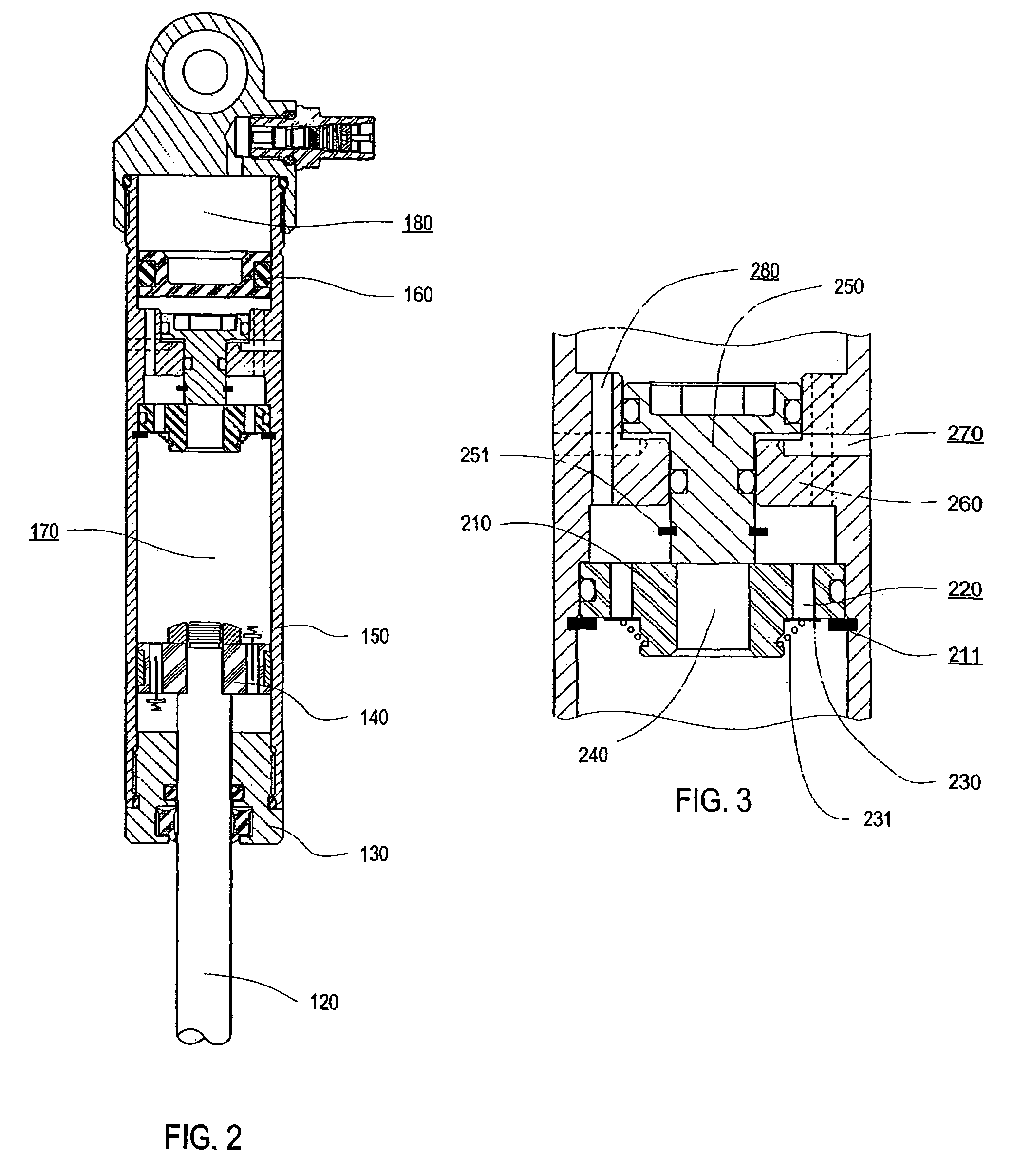Damper with pressure-sensitive compression damping
a damping and pressure-sensitive technology, applied in the field of dampers, can solve the problems of affecting the effect the inability to react, the relative complexity and cost of the damping force,
- Summary
- Abstract
- Description
- Claims
- Application Information
AI Technical Summary
Benefits of technology
Problems solved by technology
Method used
Image
Examples
Embodiment Construction
[0056]The prior-art damper 100 of FIG. 1 will be described first, in order to provide a point of departure for better understanding the improvements of the present invention, which will be described further on. It is to be understood, of course, that this specific prior-art embodiment is representative only, and that the embodiments disclosed herein may be applied to other types of dampers.
[0057]In FIG. 1 the prior-art damper 100, as is known to those skilled in the art, is comprised of an upper eyelet 110 and a lower eyelet 112 for attachment to, for example, the sprung and un-sprung portions of a vehicle (not shown). The lower eyelet 112 is connected to the piston rod 120 which passes through the seal head 130 and has a damping piston 140 attached at the other end. The damping piston 140 reciprocates in the damper cylinder 150 as the sprung and unsprung portions of the vehicle move relative to each other when, for example, the vehicle traverses uneven terrain. The damping piston 1...
PUM
 Login to View More
Login to View More Abstract
Description
Claims
Application Information
 Login to View More
Login to View More - R&D
- Intellectual Property
- Life Sciences
- Materials
- Tech Scout
- Unparalleled Data Quality
- Higher Quality Content
- 60% Fewer Hallucinations
Browse by: Latest US Patents, China's latest patents, Technical Efficacy Thesaurus, Application Domain, Technology Topic, Popular Technical Reports.
© 2025 PatSnap. All rights reserved.Legal|Privacy policy|Modern Slavery Act Transparency Statement|Sitemap|About US| Contact US: help@patsnap.com



